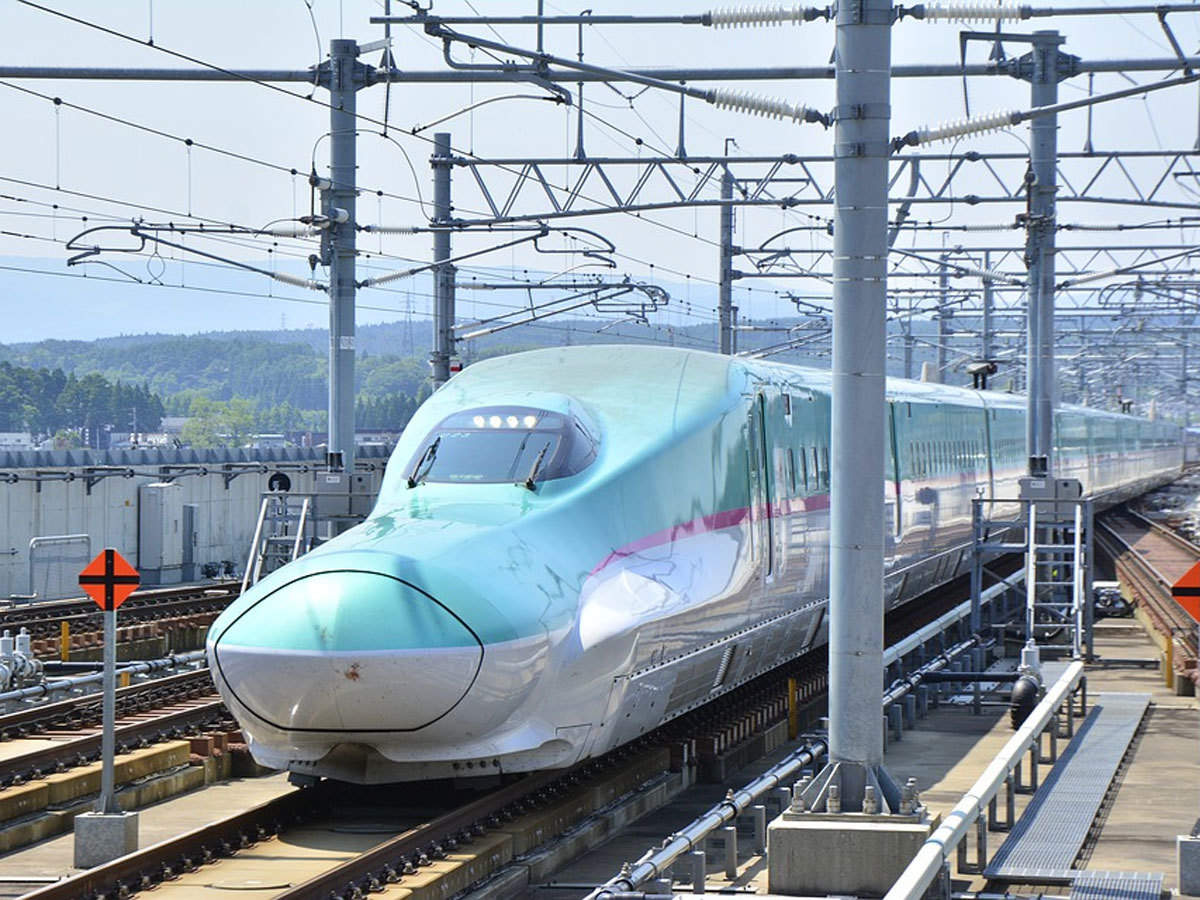The Government of India’s big-ticket infrastructure initiative of launching six more bullet trains (high speed rail services) in the coming years would transform the nation’s economy, while giving a boost to three southern metros–Hyderabad, Chennai and Bangalore. Already, a bullet train project between Mumbai and Ahmedabad (508.17km) is under work since September 2017. The new bullet train projects to come up are: Delhi-Varanasi (865km), Mumbai-Nagpur (753km), Delhi-Ahmedabad (886km), Chennai-Mysore via Bangalore (435km), Delhi-Amritsar (459km), Mumbai-via Pune-Hyderabad (711km) and Varanasi-via Patna-Howrah (760km). Including the Delhi-Ahmedabad, these projects will cover a distance of 4,869 km. These projects may take eight to 10 years. En route, these projects will connect several other metros and cities, thus offering a high-speed transport corridor in the country. The Union transport ministry has asked the National High Speed Rail Corporation Limited (NHSRCL) to prepare a detailed project report (DPR) for the new routes. The National Highways Authority of India (NHAI) department and the railways would be involved in the DPR preparation. The maximum speed of these bullet trains will be 340 km per hour (kmph), while that of the existing trains is up to 220 (kmph). The ticket fare of a bullet train will be slightly less than that of a flight. So, a passenger can reach Mumbai from Hyderabad in less than four hours, if there is only one stop–Pune. If there are more stops, the travel time may go up.
The Centre has tentatively earmarked around Rs 10 lakh crore for the new bullet train projects, at an estimated cost of Rs 213 crore per km of bullet train. A final cost of a route will depend on the bids finalised after the tender process based on DPRs. Who will execute these projects and on what terms, will all be decided later. The Mumbai-Ahmedabad project will be executed by a Japanese consortium.
A salubrious aspect behind the sudden expansion of these bullet trains, from one to seven, is its multiple benefits to the country. In the immediate term, it will inject around Rs 10 trillion into the economy, thus lifting its spirits hit by the Covid-19 pandemic. Anyway, a major section of economists has been urging the government to spend big amounts to revive growth rates. In the medium term, the high-speed rail network will trigger exponential growth in domestic traveling–especially long-distance ones–and trade. And in the long term, the areas around the metros connected by the bullet trains will witness phenomenal spurt in manufacturing and processing industries, which would help realise the goals of “Make in India” campaign. The Centre is quick to learn from the lessons of the Mumbai-Ahmedabad bullet train project, for which the foundation stone was laid three years ago. The Rs 1.08 lakh crore project, which would utilise the Shinkansen technology, was originally expected to be ready by December 2023. But, due to unexpected delays in the land acquisition, it is now likely to be ready by October 2028.
Only 63% of the lands were acquired till August this year (80% in Dadar and Nagar Haveli and 77% in Gujarat, while Maharashtra has done the job only by 22%). The delays in land acquisition might lead to further escalation in costs. Keeping this in view, the Centre has now decided to align the routes of the new projects along the national highways or the railway lines. Officials in the railways who are in the know of things say that the proposed six bullet train routes would be mostly built on elevated corridors—meaning, their tracks will be built on top of the highways and train tracks. This will greatly reduce the costs and time delays of acquiring separate land for bullet trains. At the same time, there may be some minor increase in the distances. The bullet train connectivity between Hyderabad and Mumbai will open up new opportunities for both passengers and freight. Now the fastest trains take not less than eight to ten hours to connect the two metros, as there are more stops in between. Flights are a bit costly for passengers and expensive for goods. Still, Mumbai, Hyderabad and Pune are interdependent for many goods and services. Similar is the case with Chennai, Bangalore and Mysore. Though the distance may be relatively short, a bullet train will further integrate the two major metros–Chennai and Bangalore. This will also bring closer the two ports–Chennai and Mangalore, on the west coast. Thousands of units will dot the new manufacturing hubs that would come up along the bullet train routes.

